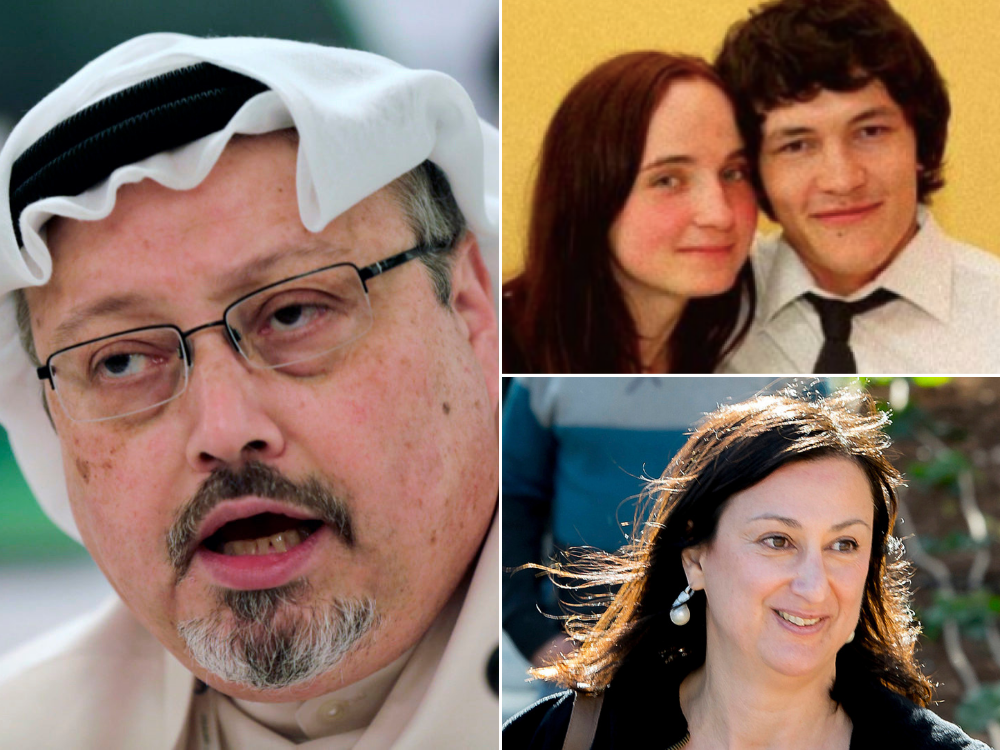
A “staggering” 2,658 journalists and media workers have been killed globally while carrying out their work in the past 30 years, according to the International Federation of Journalists.
This figure amounts to about two deaths per week since 1990.
The IFJ said that when it started reporting the numbers of deaths in 1990, it was a time “when raising a white flag and writing TV in masking tape on a vehicle might help keep one safe”.
“Some believed that this was merely a blip. Sadly this proved not to be.”
Although the numbers have fallen from a peak of 155 in 2006 to 49 in 2019 and 42 in 2020 so far, the IFJ urged the industry there is “no room for complacency”.
IFJ general secretary Anthony Bellanger said the report’s trends should instead act as an “urgent call to redouble our efforts to mobilise for greater protection of journalists and commitment to the safe practice of journalism”.
“The decrease of journalists’ killings in recent years cannot disguise the deadly danger and threats journalists continue to face for doing their work,” he said.
[Pictured: Murdered journalists Jamal Khashoggi, Jan Kuciak with his fiancée, and Daphne Caruana Galizia]
The IFJ noted that although the UN security council adopted a resolution in 2006 calling on all governments to protect journalists, the political will is still not there and 1,492 have died in the 14 years since.
Over 50% of the killings took place in ten global hotspots which have suffered war violence, high levels of crime, corruption and a “catastrophic breakdown of law and order”.
In 2020 Mexico topped the list for the fourth time in five years.
The IFJ noted that unless it was a “well-known Western correspondent” who had been killed “the world barely noticed”.
The most murderous years were 2006 and 2007 with 155 and 135 killed, respectively. They reflected the height of the Iraq war and the sectarian bloodbath that ensued with 69 and 65 (almost 50%) killed, respectively, in each of these years.
Almost 75% of all the journalists killed were ruthlessly and deliberately murdered, having the additional impact of sending signals to “countless others that they or members of their family could well be next” and causing fear and self-censorship.
The remaining 25% deaths came from getting caught in incidents like crossfire or a suicide bombing attack.
The IFJ said: “There is no single explanation as to why journalists are targeted, but one of the principal causes has always been wars and armed conflicts where journalists who report on them are exposed to injury, kidnapping or worse.
“In recent years a novel threat to journalists has emerged with the involvement of terrorist organisations, many operating in the Middle East region. In the case of the murder of journalists at Charlie Hebdo it proved they can strike in any part of the world.
“In other regions it is not war but crime barons and corrupt officials who lead the slaughter.”
The IFJ also noted that at least 235 journalists are currently in prison worldwide, across 34 countries.
Although it is the lowest for killings, Europe has the most journalists in jail (91) – mostly in Turkey (67) and Belarus (11).
Picture: AP Photo, Hasan Jamali/Reporters without Borders/AP Photo, Jon Borg
Email pged@pressgazette.co.uk to point out mistakes, provide story tips or send in a letter for publication on our "Letters Page" blog
